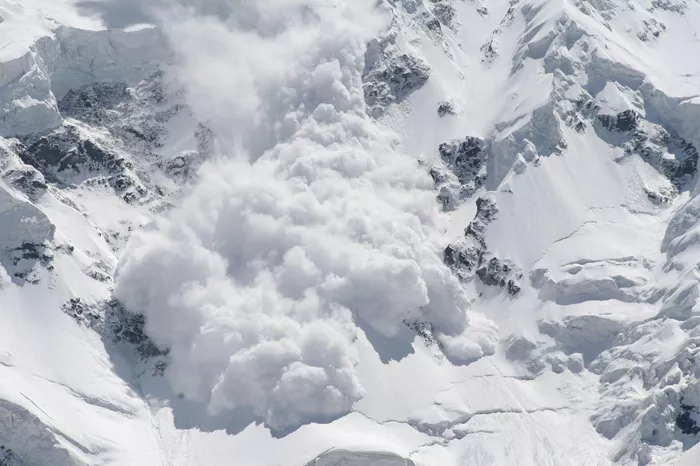Skiing through pristine powder in the backcountry delivers unmatched exhilaration. However, it also comes with a serious risk: avalanches. Avalanches are fast, deadly, and unpredictable. Each year, they claim lives—mostly among skiers, snowboarders, and mountaineers who venture into unpatrolled terrain. Knowing how to survive an avalanche while skiing is not just a precaution; it’s a vital skill every winter sports enthusiast must master. This Skiing Guide will help you understand avalanche dynamics, prepare adequately, and respond effectively during and after a slide.
Understanding Avalanches
What is an Avalanche?
An avalanche is a sudden flow of snow down a slope, triggered naturally or by human activity. It occurs when a layer of snow collapses and slides downhill. Avalanches vary in size—from minor slides to massive events capable of burying entire forests.
Types of Avalanches
Slab Avalanches: Most deadly. A cohesive plate of snow breaks away.
Loose Snow Avalanches: Begin at a point, gather volume downslope.
Wet Avalanches: Occur in warmer conditions, heavier and slower.
Dry Avalanches: Light, powdery, and fast-moving.
Causes of Avalanches
- Snowpack instability
- Weather changes (e.g., rapid warming)
- Human triggers (skier or snowboarder weight)
- Steep terrain (typically 30°–45° slopes)
Preparation Before Skiing
Check Avalanche Forecasts
Before heading out, check daily avalanche bulletins from regional authorities. These forecasts assess risk levels from low to extreme. Avoid high-risk days, especially after heavy snowfall or rapid warming.
Gear Checklist for Survival
- Avalanche beacon (transceiver)
- Probe
- Shovel
- Helmet
- Airbag backpack
- GPS device
- Map and compass
- Emergency whistle
- High-calorie snacks and hydration
Training and Skill Development
- Take certified avalanche safety courses. Learn to:
- Read snowpack layers
- Perform beacon searches
- Conduct rescue operations
- Navigate using topographical maps
Travel with a Group
Never ski alone in avalanche-prone areas. Maintain visual contact. Establish signals. Discuss emergency plans in advance.
How to Prevent Triggering an Avalanche
Terrain Awareness
Avoid slopes steeper than 30° if avalanche risk is elevated.
Steer clear of convex rolls, terrain traps, gullies, and bowls.
Watch for signs of instability—cracks, “whumphing” sounds, recent slides.
Smart Route Planning
Ascend ridges instead of slopes.
Ski one person at a time across dangerous zones.
Use safe zones to regroup.
Snowpack Testing
Compression Test: Assess bonding between snow layers.
Extended Column Test: Predict potential slab fractures.
Dig snow pits to analyze the snowpack profile.
What to Do When an Avalanche Starts
React Immediately
Yell to alert others.
Activate avalanche airbag (if available).
Ditch poles, unstrap backpack if not airbag-equipped.
Attempt to Ski Out
If you’re near the top or edge, angle off the slide path. Try to reach the side and get to safe terrain.
Use Swimming Motions
Once caught:
Fight to stay on the surface.
Use breaststroke movements.
Keep arms in front of your face.
Create an Air Pocket
As the snow slows:
Cup hands in front of mouth.
Expand chest space by taking a deep breath.
Try to maintain a calm mental state.
What to Do If You’re Buried
Stay Calm and Conserve Air
Panic uses oxygen faster. Focus on breathing steadily. If possible, wiggle fingers or toes to prevent numbness.
Listen for Sounds
Stay silent intermittently to detect rescuers.
Don’t Waste Energy
Unless light is visible or you can determine up/down, don’t attempt to dig randomly. Movement exhausts oxygen and body heat.
Rescue Protocol: For Companions
Call for Help Immediately
Use satellite devices or mobile networks. Provide exact location coordinates.
Beacon Search
– Switch transceivers to search mode.
– Follow signal strength.
– Probe methodically in grid pattern.
Shoveling Technique
– Begin downhill of the probe strike.
– Use strategic digging to reduce time.
– Clear airway space first.
Post-Rescue Medical Steps
Assess Breathing and Pulse
– Initiate CPR if necessary.
– Treat for hypothermia: insulate with jackets or blankets.
Transport Safely
If stable, move victim to sheltered area. Await professional responders. Avoid sudden movements.
Long-Term Prevention Strategy
Invest in Ongoing Education
Advanced avalanche training programs offer rescue simulations, snow science, and GPS usage.
Stay Informed
Follow avalanche centers, ski patrols, and backcountry guides. Subscribe to alert systems.
Use Modern Technology
Apps now provide real-time slope analysis and danger zones. Use them alongside traditional tools.
Psychological Preparedness
Mentally Train for Crisis
– Practice visualization.
– Study real-life avalanche survival stories.
– Conduct mock drills regularly.
Group Dynamics Matter
Assign roles. Trust team members. Debrief after each trip.
When Not to Ski
Red Flags to Watch For
– More than 12 inches of snowfall in 24 hours
– Sudden temperature rise
– Avalanche activity nearby
– Recent rain on snowpack
Alternative Plans
On risky days, choose safer resort slopes or delay the trip. No thrill is worth your life.
Conclusion
Surviving an avalanche is not about luck—it’s about preparation, awareness, and quick thinking. Skiers who take proactive steps dramatically improve their chances of staying alive. Learn the signs. Pack the right tools. Stay trained. Most of all, respect the mountain. Your safety lies not only in your skills but in your discipline to apply them when it matters most.
Avalanche survival is an art refined through knowledge and experience. As more skiers embrace the backcountry, education and preparation are no longer optional—they are essential. Equip yourself. Educate your group. Respect nature’s power.

